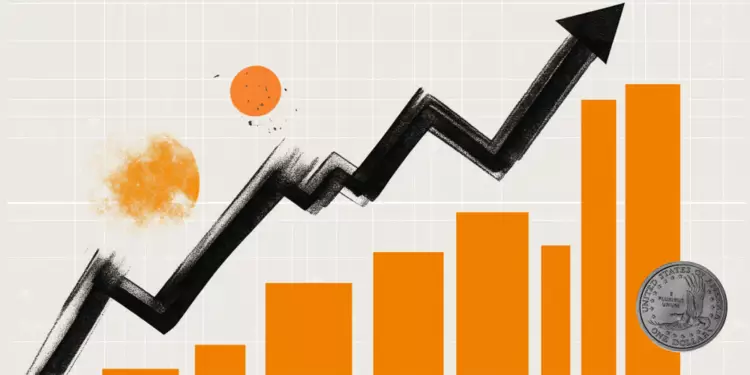The US Dollar (USD) has demonstrated remarkable resilience, maintaining its position above the key threshold of 108.00 as traders prepare for significant tariff transformations over the weekend. With the US Dollar Index (DXY) recently reaching a weekly high, hovering around 108.50, market participants are keenly focusing on upcoming trade policy announcements. The DXY serves as a critical indicator, measuring the value of the dollar against a collection of foreign currencies, and its stability above 108.00 suggests a cautious optimism within the marketplace.
This weekend marks a decisive moment as tariffs on key trading partners Canada and Mexico are set to take effect. As volatility is anticipated at the start of the upcoming week, the financial community awaits how these changes will play out, particularly how they might affect the overall sentiment toward the US Dollar. Furthermore, remarks from Press Secretary Karoline Leavitt confirmed that the February 1st deadline for tariffs is non-negotiable, and these measures could play a pivotal role in shaping market dynamics.
President Trump’s rhetoric surrounding the BRICS nations—Brazil, Russia, India, China, and South Africa—adds another layer of complexity to the global economic picture. By threatening a staggering 100% tariff on these nations if they challenge the dominance of the US Dollar in international trade, Trump’s administration is sending a clear message: the US will not sit idly by while its financial preeminence is questioned. This aggressive stance not only raises the stakes for BRICS nations contemplating alternative global currencies but also highlights the possible implications on international relations, trade agreements, and market stability.
The relationship between the US and BRICS is fraught with tension, exacerbated by the efforts of these nations to create a currency alternative for global transactions. Such a shift could undermine the value of the US Dollar, instigating sharp reactions from the US government. Market analysts must consider the long-term repercussions of these tariffs, which could lead to retaliatory strategies from BRICS partners, thereby escalating tensions and potentially setting off a broader trade conflict.
Adding intrigue to this economic landscape are the latest data points concerning inflation. The release of December’s Personal Consumption Expenditures (PCE) revealed a modest month-on-month increase of 0.2%, aligning with market expectations. Core PCE, which excludes volatile categories like food and energy, also rose 0.3%. These metrics suggest persistent price pressure in the economy, reinforcing the belief that the Federal Reserve will adopt a cautious approach regarding future monetary policy adjustments.
Currently, the market perceives a robust possibility—around 80%—that the Federal Reserve will maintain its policy rate during the upcoming March meeting. Observers are eyeing the Atlanta Fed’s GDPNow model for its first growth estimate of Q1, with current projections inciting a mix of enthusiasm and trepidation from investors. The performance of US Treasury yields, particularly the 10-year yield trading approximately at 4.50%, further illustrates a market grappling with inflation concerns amid evolving fiscal policy.
Consumer confidence remains a key pillar, as reflected in recent reports indicating a rise in Personal Income by 0.4% and Personal Spending climbing by 0.5% in December. These figures suggest that, irrespective of tariff fears, American consumers are displaying resilience, which is crucial for sustaining economic momentum. The upcoming days will test this consumer resilience as markets react to impending tariff adjustments and broader geopolitical challenges.
The implications of these economic indicators are profound. Should the outlook remain positive for the US economy, this could foster a conducive environment for the dollar to sustain its strength. However, increased market volatility could lead to fluctuations in investor behavior, rendering predictions difficult.
While the US Dollar maintains a strong position, the nexus of tariffs, inflation, and consumer behavior creates a complex economic tableau. The potential resurgence of the US-China trade war, coupled with heightened tariffs on BRICS nations, could further complicate the global trade narrative. As market participants anticipate these unfolding scenarios, the overarching message is clear: vigilance is key, and navigating through these turbulent waters will require a nuanced understanding of both domestic policies and international relations. The trajectory of the US dollar will depend significantly on how these elements converge, signaling a need for agility in both investment strategies and economic governance.

